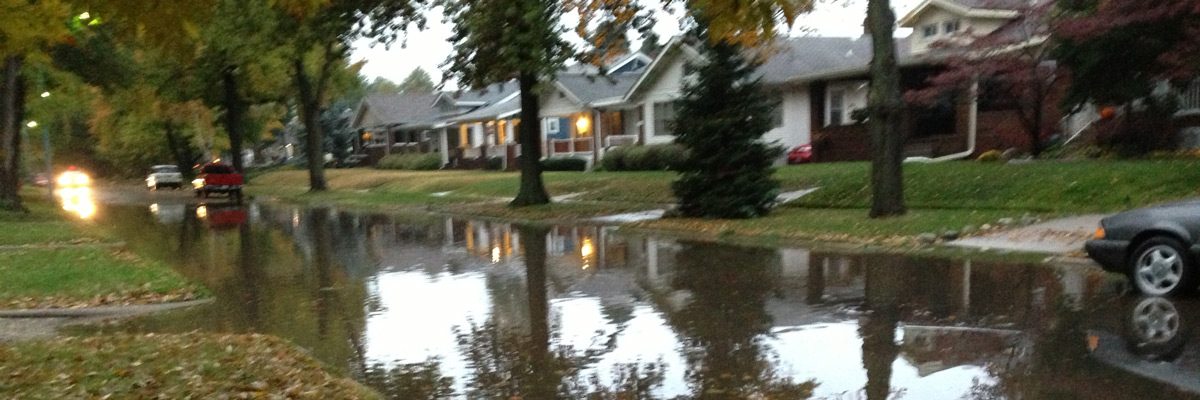Why would wind energy generation on or in Lake Michigan be controversial? Well first there is the “Chicago Attack”. This will just benefit large cities. Then there is the “pristine view” attack. It will block my beautiful view of this beautiful lake on a beautiful day. Finally there is the, “sure it will create jobs….but not ones I will be qualified for”.
http://domesticfuel.com/2009/12/23/scandia-proposes-1000-mw-lake-michigan-wind-farm/
A Minnesota company is proposing to build a massive wind farm in Lake Michigan, but some of the residents of Michigan, which has some of the highest unemployment rates in the country, still aren’t pleased about the project that would bring green energy and jobs to the economically distressed region.
The Detroit Free Press says that Scandia Wind, a Minnesota firm partnering with a Norwegian wind developer, wants to put up a 1,000-megawatt wind farm just offshore from the communities of Pentwater and Ludington:
Several companies have been sniffing out offshore wind farm possibilities in Michigan, but Scandia was the first to jump in and publicly announce its plans. The turbines would be visible all along the shore, which takes in Silver Lake and Mears state beaches, Little Sable Lighthouse and Pentwater Harbor.
The firm wants to build foundations on the lake bottom, which is owned by the citizens of Michigan, and place 100 to 200 turbines — 5 to 10 megawatts each — on top.
The total size would make the wind farm bigger than any proposed new coal plant in Michigan and nearly as large as the Fermi 2 nuclear plant.
Local residents say the wind turbines would ruin the view off their beaches and hurt tourism. Scandia officials point out that the $3 billion project would put people to work to the tune of at least 2 million man-hours.
COMMENTS
LakeShoreOwner
I attended the meeting in Ludington. Dirdal (Scandia Rep) said after the project was completed, only about 100-150 jobs would remain, and that national bidding for these positions wouldn’t guarantee they would be local. The skills for these jobs are not your garden variety skill sets.
I believe this project will only help those who need the energy and are willing to pay for it (Detroit and Chicago). Locally, aesthetically, and economically the Oceana and Mason residents will pay for it in lost property values and tax bases.
Julie Burdick
Wind turbines in Lake Michigan would lower property values and lower the tax base because the reason property values are high in this area is because of the access to the natural resources. This includes sailing, boating and fishing on the great lake and admiring the views from the beaches. This may work in Denmark etc. but it is not the reason people live and visit Pentwater and surrounding areas. Why should Pentwater bear the brunt of creating “green energy” for the surrounding metropolitan areas??
:}
OH then there is the coal, oil and gas push back – they are unreliable and costly.
I thought this was interesting…..”Despite their being cited as the shining example of what can be accomplished with wind power, the Danish government has cancelled plans for three offshore wind farms planned for 2008 and has scheduled the withdrawal of subsidies from existing sites. Development of onshore wind plants in Denmark has effectively stopped. Because Danish companies dominate the wind industry, however, the government is under pressure to continue their support. Spain began withdrawing subsidies in 2002. Germany reduced the tax breaks to wind power, and domestic construction drastically slowed in 2004. Switzerland also is cutting subsidies as too expensive for the lack of significant benefit. The Netherlands decommissioned 90 turbines in 2004. Many Japanese utilities severely limit the amount of wind-generated power they buy, because of the instability they cause. For the same reason, Ireland in December 2003 halted all new wind-power connections to the national grid. In early 2005, they were considering ending state support. In 2005, Spanish utilities began refusing new wind power connections. In 2006, the Spanish government ended — by emergency decree — its subsidies and price supports for big wind. In 2004, Australia reduced the level of renewable energy that utilities are required to buy, dramatically slowing wind-project applications. On August 31, 2004, Bloomberg News reported that “the unstable flow of wind power in their networks” has forced German utilities to buy more expensive energy, requiring them to raise prices for the consumer.”
:}
Bunch of crap if you ask me. More tomorrow.
:}



